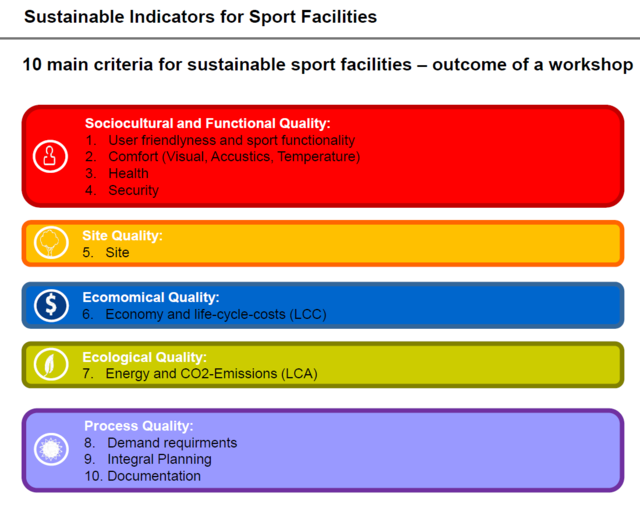In this context, and in the context of the European Union’s increasing climate ambition, sustainable and green construction, reconstruction, and management of sport infrastructure presents not only a challenge for many countries, but also a great opportunity. Even though this topic may not be a direct subject of (future) sustainability strategies of ASAP project partners, it is of outmost importance for most countries in Europe as the general state, including energy efficiency and accessibility, of sport infrastructure is often unsatisfactory.
This is why, following the example of a seminar on this topic organised by the NOC of Slovakia, the ASAP team decided to invite one of the most prominent experts on the topic, Prof. Dr. Natalie Essig, Head of Institute for Building Climatology at the Faculty of Architecture
of the Munich University of Applied Sciences, to talk about the basic concepts pertaining to sustainable sport infrastructure and to introduce its advantages.
On 11 November 2020, Prof. Essig took over twenty participants representing Olympic movement organisations (NOCs, IOC, EOC EU Office), International sport federations (FIFA) and national-level institutions on a very useful journey through the history of sport infrastructure, the challenges it currently faces, the relevant sustainability assessment methods, and finally, through the sustainable criteria for sport facilities. Going well beyond environmental and ecological aspects, the framework of sustainable sport infrastructure criteria, as presented by Prof. Essig, is comprehensive and takes into account the whole life cycle of the infrastructure as well as its impact on people, planet and the economy:
- Ecological quality (energy, water, materials, area consumption, recycling etc.)
- Social and functional quality (comfort, health, user-friendliness, barrier-free accessibility, multi-functionality etc.)
- Economical quality (life-cycle costs, economic efficiency etc.)
- Technical characteristics (fire protection, acoustics, building shell, deconstruction, maintenance etc.)
- Process quality (master planning, integral planning, tender process, construction site, monitoring etc.)
- Site quality (risks, transport etc.)
- Sport-functional quality (integration into existing urban structure, re-use, sport-functional aspects, user quality etc.)
While applying the whole set of criteria may be impossible for small infrastructural projects, especially those at grassroots level, all new construction and reconstruction initiatives can, and indeed should, be looked at through the sustainability lenses, even if it means that only basic criteria are taken into account (see the image below). Every step, not matter how big, counts.

Source: Prof. Dr. Natalie Essig, 2020, ASAP Project webinar on Sustainable Sport Infrastructure